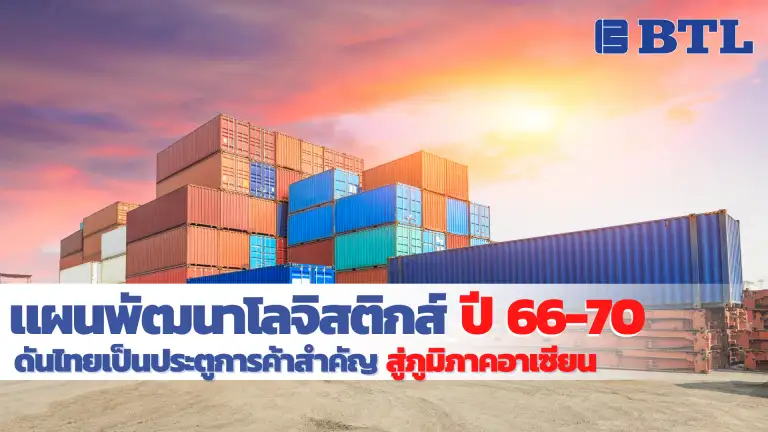Thailand's Logistics Development Plan 2023-2027 Aims to Position Thailand as a Key Trade Gateway in ASEAN
December, 30 2022

Rachada Dhnadirek, Deputy Government Spokesperson, revealed that the Cabinet (Cabinet) has approved the Thailand Logistics Development Plan 2023-2027. This plan is intended to establish logistics as a vital force in positioning Thailand as a key trade hub in both the subregion and the ASEAN region.
The plan will be implemented through five key logistics development strategies:
-
Developing transportation infrastructure and facilities, including:
- Expanding integrated transport networks connecting ports, railways, roads, and airports to key economic zones, industrial areas, and border checkpoints.
- Enhancing logistics service centers and upgrading key border checkpoints.
- Managing logistics infrastructure and logistics service centers effectively.
- Promoting digital technology adoption in logistics operations.
-
Upgrading supply chain standards and adding value, such as:
- Improving agricultural logistics and supply chain management.
- Creating a conducive ecosystem for industrial sector growth.
- Implementing eco-friendly and sustainable logistics practices.
-
Enhancing customs procedures, import-export processes, and cross-border transport facilitation, including:
- Strengthening data integration through the National Single Window (NSW) system.
- Transitioning logistics operations to an electronic format.
- Improving facilitation for transit and cross-border trade.
- Addressing challenges in international logistics and trade regulations.
- Revising and improving laws and regulations governing international transportation and logistics.
-
Developing the capacity of Logistics Service Providers (LSPs), including:
- Strengthening the competitiveness of logistics providers.
- Enhancing Thai logistics service providers’ capabilities to compete on the international stage.
-
Promoting research, innovation, workforce development, and logistics performance monitoring, such as:
- Encouraging research and application of technology and innovation in logistics.
- Supporting investment in technology-driven logistics solutions.
- Developing skilled logistics professionals.
- Monitoring and evaluating logistics sector performance.
Key Success Indicators Under the Plan
- Reducing the cost of transportation relative to GDP to 5% per year (from 6.4% in 2021).
- Lowering the cost of inventory relative to GDP to 5% per year (from 6.4% in 2021).
- Improving Thailand’s ranking in the Customs Logistics Performance Index (LPI) to the top 25 globally, with a score of at least 3.20 (compared to rank 31 and a score of 3.14 in 2018).
- Enhancing Thailand’s ranking in the LPI for Logistics Service Providers (LSPs) to the top 25 globally, with a score of at least 3.60 (compared to rank 32 and a score of 3.41 in 2018).
In 2021, Thailand’s logistics costs accounted for 13.8% of GDP, down from 14.0% in 2020, driven by economic recovery, government stimulus, and tourism revival. In 2022, Thailand’s logistics costs were expected to improve further, with a projected decline to 12.9-13.3% of GDP.
Additionally, the Cabinet approved the revision of its 2018 resolution, assigning the Customs Department to oversee the management and development of the National Single Window (NSW) system, while redefining the role of the National Telecom Public Company Limited (NT) in logistics management.